

|
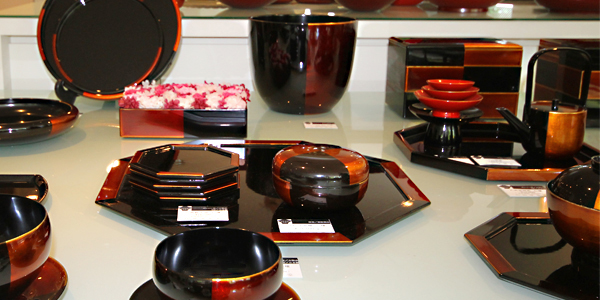 |
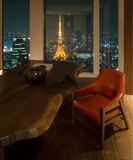 News & Announement |
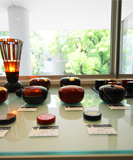 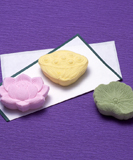 Special Article "Items Selected by the Imperial Family" Yamada Heiando / Shiose Sohonke |
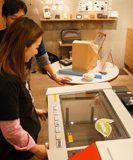 Tokyo's Concept Cafe Fab Cafe |
| Event Information |
| Updated Radiation-related Information in Tokyo |
| News & Announcements |
| The Number of Tax Exempted Categories will Increase beginning in October! |
Don't miss this opportunity to share your memories of Japan back home by giving your family and friends something with a unique flavor, an interesting name or the latest in healthy beauty products! |
| Opening of Andaz Tokyo, Toranomon Hills |
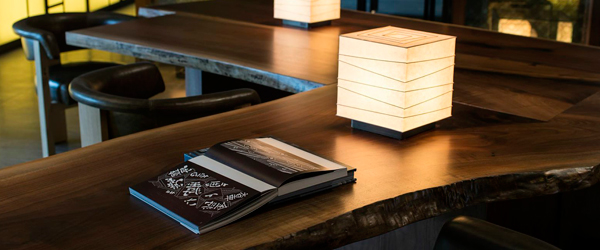
|
||
Hyatt Hotels' first Andaz hotel in Japan, Andaz Tokyo Toranomon Hills, opened in Tokyo's new spot Toranomon Hills on June 11, 2014. With 164 rooms including 8 suites, the hotel's spatial design reflects the Japanese love for natural materials and textures such washi paper, stones and wood. Andaz Tavern (main dining) on the 51st floor and Rooftop Bar on the 52nd floor command a splendid view of Tokyo, and AO Spa & Club on the 37th floor has a pool overlooking the Imperial Palace. Toranomon Hills is a 247-meter high-rise building and has a variety of shops, restaurants, offices, conference halls, and residences as well as Andaz Tokyo. With its easy access to Ginza shopping district, Marunouchi financial district, Japan's political and government center of Kasumigaseki and other areas such as Shimbashi, Akasaka, and Roppongi, Toranomon Hills is sure to be a convenient and popular place for business and for leisure. Access Andaz Tokyo Toranomon Hills: Website Toranomon Hills: Website |
| Special Article |
Items Selected by the Imperial Family |
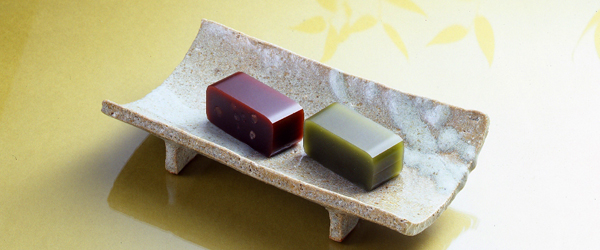
|
| The Japanese Imperial Family boasts a 2,000-year history, and items used by them over the years are recognized as authentic and dignified. Even though the official royal warrant system in Japan was abolished in 1954 most shops that have provided products to the court still have kept their dignity and keep their traditions. Many are long-established shops and more than a few have continued to evolve with the times, going beyond their current status. Among them are two shops that embody Tokyo tradition with a spirit of innovation. |
| Yamada Heiando |
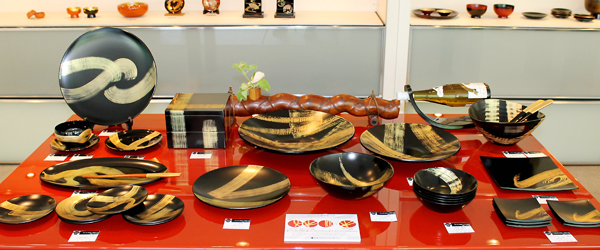
|
| Name | Yamada Heiando | ||
|---|---|---|---|
| Profile |
Products: Lacquerware Founded: 1919 Stores: Daikanyama Hillside Terrace (main store), COREDO Muromachi 3 Outlets: Major department stores, Narita International Airport |
||
| Website | http://www.heiando.com/index-e.htm Overseas mail-order is available. |
||
| Map | Map (main store) | ||
| Others | All products come with an explanatory leaflet in English on lacquerware and how to care for it. In addition, communication in English is available. |
| What is Japanese Lacquerware? |
As the Japanese lacquer tree lives mainly in East Asia, lacquerware culture has prospered in eastern countries including China, Myanmar, and Japan. What makes Japanese laquerware different from that of other countries comes from the final decoration. Delicate decoration needs a long and elaborate process of making by handwork of skilled craftsmen and this results in sophisticated, high-quality Japanese lacquerware. |
| Making Lacquerware |
| Forms | Wooden forms are shaped using techniques that prevent distortion from shrinkage or warping during the drying process. |
|---|
| ↓ |
| Coatings | Lacquer is applied in the order of base coat, middle coat, sanding, and top coat. |
|---|
| ↓ |
| Decoration | Lacquerware is decorated using a variety of materials such as maki-e using gold and silver powders, mother-of-pearl, sunken gold, or silk screen. |
|---|
| Estimated Making Period | Small items: about 1 month Ordinary items: about 3 months Artistic items: 6 to 12 months |
|---|
| History of Yamada Heiando |
Konosuke Yamada opened his business in 1919 in the Nihombashi district in Tokyo after training in a lacquerware shop in Kyoto. This was the beginning of Yamada Heiando, which began selling lacquerware to the Imperial Family (Imperial Household Agency) from around 1925. "It is not clear that why our products were selected for the Imperial Family, but I assume one reason is that, while most lacquerware shops in Tokyo dealt with products from the Tohoku region, we dealt with lacquerware from Kyoto which was considered to be more elegant. Another reason, I think, is that my grandfather, the founder, was good at painting and making unique designs, which were perhaps evaluated highly. We mainly supplied ware for use in ceremonies and still now provide sake cups with the Imperial Chrysanthemum Crest," said the fourth owner, Kenta Yamada. |
| Distinctive Yamada Heiando Lacquerware |
"Our Dragon series has been a good seller for more than 20 years. As it is similar to Western tableware, it fits modern interiors and is popular among non-Japanese," Yamada said. The most popular series now is "Byakudan" series. Traditional byakudan-nuri is a technique of coating a piece many times with gold and silver leaf or powder to make a unique transparent brown surface. Yamada Heiando has revitalized and modernized this traditional technique by contrasting the shiny brown with jet black. Furthermore, Yamada Heiando has been entering into areas beyond tableware, such as watches, stationery, and smart phone covers. In collaboration with the luxury brand Chopard, Yamada has adopted maki-e, an elaborate technique of gold and silver lacquer to decorate their watches. The conditions in which the watch will not work may be a matter of a few tenths of a millimeter and requires a highly skilled craftsman using an ultra thin brush of only one or two animal hairs. This series has become popular and there is an eight-month wait after ordering. |
| For Overseas Travelers |
Yamada recommends the Dragon series for tourists. "The Dragon series is easy to use in daily life as the shapes are in the Western style. Or, gorgeous items such as a champagne cooler or a large tray are good for a party and also for interior décor." Champagne coolers start from 30,000 yen (294.72 USD) and trays from 5,000 yen (49.12 USD). |
| Tips and Care of Lacquerware |
| Care | Lacquerware, other than intricate art pieces, can be washed with a damp sponge using non-abrasive detergent, similar to ordinary tableware. |
|---|---|
| Avoid |
Direct sunshine, dishwashers, microwave ovens, overnight soaking in water, and extremely dry, humid or long-term refrigerated storage. |
| Shiose Sohonke |
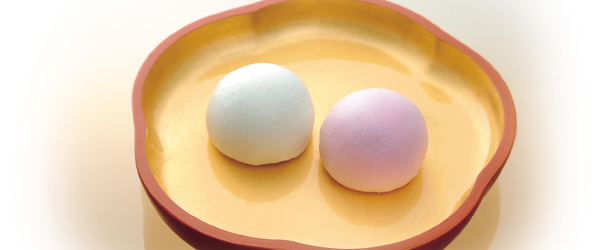
|
| Name | Shiose Sohonke | ||
|---|---|---|---|
| Profile |
Products: Manju and Japanese confectionery Founded: 1349 Main Store: Tsukiji Outlets: Major department stores around Tokyo and others |
||
| Website | http://www.shiose.co.jp/ (Japanese version only) | ||
| Map | Map (Main Store) | ||
| Others | Communication in English is available. |
| What is Manju? |
Manju is a steamed confectionery consisting of buns with a bean jam filling, adapted from the steamed bread eaten in China. Manju originated in Japan and are made with a variety of different kinds of fillings and different kinds of buns. Manju buns filled with red adzuki bean jam have been loved by people since ancient times. It is said that this red bean jam manju originated at the Shiose Sohonke confection shop. |
| History of Shiose Sohonke |
After the establishment of the Tokugawa government in Edo (currently Tokyo) by Tokugawa Ieyasu, Shiose came to Edo in 1659 and opened a shop in Nihombashi. After the Meiji restoration in 1868, Shiose became a royal warrant. "I heard that my father, the 32nd owner, was allowed to enter the court and made sweets in front of the Meiji Emperor. After serving the sweets, my father played sumo with the child who later became the Showa Emperor. Empress Shoken was fond of our yokan (sweet adzuki beans jelly) and named it "Plum at Night." Now, our adzuki bean jam is used for shiruko (sweet bean soup with rice cakes) for the Imperial Family during the New Year," the 34th owner Hideko Kawashima said proudly. |
| Distinctive Confections from Shiose |
- Every morning, a 38-year veteran makes the bun dough expertly kneading in raw, freshly grated and not powdered, yams . - The yams and adzuki beans are bought directly from farmers. - Koshian (strained adzuki bean jam) is carefully strained many times to remove any harshness of the adzuki beans and makes it go down very smoothly. |
||
The business style has greatly changed from times when Shiose only sold confectionery to the upper classes, but the sweets remain popular because of their elegant, sophisticated and outstanding quality. "Although some people may think manju is just an everyday item, it is actually a luxurious sweet. We have always been particular about the quality and also will be in the future," Kawashima clearly stated. |
| For Overseas Travelers |
Shiose manju (9 pieces of bite-sized Joyo-manju) is 1,080 yen (10.61 USD). |
| Tokyo's Concept Cafe |
|
Fab Cafe
|
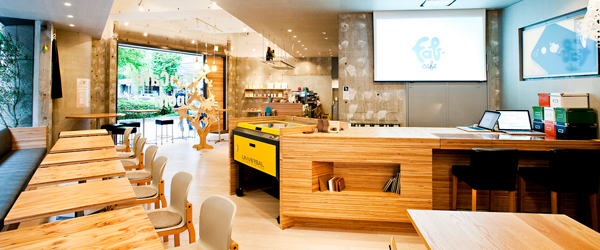
|
Smoothly connecting to the Internet, communicating in English, and having a cup of delicious coffee. These are things available in many cafes, but in addition to these things, FabCafe is one of the few cafes where you can actualize your creative ideas and your inner sense of fun.
FabCafe opened in 2012 at the top of Dogen-zaka with the concept of "Monodukuri"—making things. Available on site are 3D printers, lazar cutters, 3D scanners and other digital tools, and even novices can enjoy make things. Come in and put your name on the waiting list. While waiting for your turn, create your designs on the available iPads or bring in your designs on your own device. When your turn comes, give your data to the staff and relax while your creativity becomes a reality. If you have a lot of time, this is a great way to spend free time. Even if you don't have much time, it is worthwhile to drop in and sip the 3rd wave coffee. This is a place everyone should check out in Shibuya, a great place to rest uploading pictures to Facebook or tweeting! |
| Website | http://fabcafe.com/tokyo/ |
|---|---|
| Adress | Dogenzaka Pia 1F, 1-22-7, Dogenzaka, Shibuya-ku, Tokyo |
| Map | Map |
| Open | Mon-Fri 10:00 a.m.-9:00 p.m. Sat & Sun 11:00 a.m.-9:00 p.m. |
| Rate | 3D printer: 800 yen (7.85 USD) / 10 minutes Lazar cutter: 800 yen (7.85 USD) / 10 minutes |
| Event Information |
|
Shinagawa Shukuba Matsuri Festival
|
Shinagawa was the first post town of the 53 post towns on the Tokaido Road from Nihombashi in Edo (current Tokyo) to Kyoto during the Edo period (1603-1867), and this festival was commenced in 1990 to pass down this history and tradition.
The festival takes place 2 km from Yatsuyama in Kita-Shinagawa to Aomono-yokocho in Minami-Shinagawa along the Old Tokaido Road on the last Saturday and Sunday in September every year. Women chosen among citizens parade in Oiran-dochu dressed in gorgeously traditional kimono on Saturday. Another parade with about 1,000 people, including persons who wear traditional clothing, a gun corps, and others as well as a marching band go around town on Sunday. In addition, a variety of events are also held. |
| Website | http://shinagawashuku-matsuri.com/ (Japanese version only) |
|---|---|
| Venue | 2 km from Yatsuyama in Kita-Shinagawa to Aomono-yokocho in Minami-Shinagawa |
| Access | Kita-Shinagawa, Shin-Bamba, and Aomono-Yokocho stations on the Keikyu Line |
| Date | September 27 and 28, 2014 |
|
List of events and festivals Go to our website & find more exciting events and festivals. |
| No Negative Impact on Our Health: Updated Radiation-related |
Radiation dose after touring Tokyo for one day (July 9, 2012) Report on field measurements
by Japan Tourism Agency Measurements results of Environmental radiation levels in Tokyo by Tokyo Metropolitan Institute of Public Health Information on the Great East Japan Earthquake by Ministry of Health, Labor and Welfare |
 |
To access the previous edition of e-Tokyo Today and our printed newsletter, Tokyo Today, please visit: e-Tokyo Today back number. If at any time you wish to stop receiving our emails, Please email to news@tcvb.or.jp. Issued by: Tourism Division, Bureau of Industrial and Labor Affairs, Tokyo Metropolitan Government Planning / Editing: Tokyo Convention & Visitors Bureau E-mail: news@tcvb.or.jp Tel: +81-3-5579-2683 Fax: +81-3-5579-2685 |
 |